 October 29, 2009 John E. Ross, KD8IDJ, Editor
| |||||||
+ Available on ARRL Audio News + Operating: Changes for the 2009 November Sweepstakes
+ Public Service: FCC Issues First Waiver for Government-Sponsored Disaster Drill
+ Public Service: Santa Cruz County Hams Called to Assist During Wildfires
Almost 20 years to the day since the Loma Prieta Earthquake shook California's Bay Area, a wildfire was burning through Santa Cruz County (approximately 75 miles south of San Francisco) just miles from the epicenter of the quake that caused part of the Bay Bridge to collapse. Just as Amateur Radio operators responded to calls for assistance for the earthquake, 20 years later on October 25, they responded when needed for a 485 acre wildfire. Click here for more information. + The Doctor Is IN: Antennas for Domestic Contests By ARRL News Editor S. Khrystyne Keane, K1SFA Just the other day, the Doctor and I got to talking about ARRL Sweepstakes. I showed him my crystal mug and whisk broom from last year's Sweepstakes running (the W1AW team did quite well), and he showed me what kind of antennas I should look into for domestic contests. Being more of a DX RTTY contester, I really don't know much about the domestic side of things. I dabbled in the February NAQP RTTY Contest last year from K1TTT -- and will do so again in 2010 -- so I made sure to listen attentively. Here is what the good Doctor had to say: Each contest brings its own special requirements to the antenna designer. While many popular contests focus on communications outside North America and require the ability to send signals to all points of the compass, Sweepstakes is different, with a need to cover just the US and Canada. That means generally shorter range contacts and contacts in a limited range of directions, depending on station location. In addition, points are gathered based on individual contacts multiplied by ARRL Sections. Thus, it is desirable to have the capability to reach all 80 sections on at least one band that will have propagation available. ARRL Contest Manager Sean Kutzko, KX9X, notes that many a contest superstation's secret weapon for Sweepstakes is a 40 meter dipole up between 25-30 feet. He says 40 meters is the Sweepstakes "money band" -- you can get close-in contacts during daylight and rake in the distant Sections when the band goes long in the evening hours. He said he had never put in a serious effort at Sweepstakes without a low dipole for 40, no matter how much aluminum he had up in the air. Another great solution is a multiband Yagi that can be pointed towards the areas with the best propagation. If possible, have it relatively low -- perhaps at a half-wave length above ground -- to be able to cover the close-in stations, as well as those at the continent's far edge. Obviously, from the Central US or Canada, distances tend to be shorter than they are from the coasts with stations near the edges better able to make use of higher antennas. If you have the ability to try different heights, by all means try lowering your antenna from the optimum height for transcontinental contacts and see what works best for you. If you're like me and don't have rotatable HF arrays available, all is not lost. First you need to figure out what azimuths you need to cover and then try to match those to fit your location. From my Connecticut location, I would want to cover from the direction toward old friend Don, WT1I, in Ocala, Florida (bearing 214°) up to Mark, KL7TQ, my old Army buddy in Eagle River, Alaska (322°). There are many ways to compute the bearing to a station. The easy way out is to just use www.qrz.com. If your listing includes your latitude and longitude, bringing up another station and "looking at the details" will provide you with the bearing to their station. If you don't know anyone at the edges of the desired coverage area, just put a city name in the "Name Search" function and pick one that comes up. It doesn't get much easier -- or, if you must, you can use spherical trigonometry.
Using my station as an example, the range of bearings I want to cover requires a beamwidth of 322° minus 214°, or 108°. A half-wave dipole at a height of half a wave length has a -3 dB beamwidth of 87° (see Figure 1). At a width of 108° it's only down to -4.6 dB from the peak. That's pretty close, and might be good if I had a lot of distant stations behind me, as in Central US or Canada, but I don't. If I were to put a wire reflector, 5 percent longer than the original dipole, 6 feet behind it (for 20 meters), I would have an easy to deploy 2-element Yagi with the pattern shown in Figure 2. To make it resonate in mid band, I need to trim about 4 inches from each end of the now driven element and I'm good to go. Note what I have -- a bit more gain in front, a lot less in the back, but still plenty of signal toward northern New England. My signal at the edges of my coverage area is now stronger than the dipole's -3 dB points. If I don't have many stations to my rear, an additional 1 dB of forward gain can be achieved at the expense of rearward signals (see Figure 3) and a higher SWR by shortening the reflector a few inches -- about 2.5 percent over the driven element should do the trick. This may be worthwhile if you are right at a corner of the country. For more bands, just use parallel elements and multiple reflectors. See the article by Marcus Hansen, VE7CA, to get the idea. Azimuth plots represented in Figures 1, 2 and 3 represent the output from the EZNEC antenna modeling software by Roy Lewallen, W7EL. Thanks Doctor! Do you have a question or a problem? Send your questions via e-mail or to "The Doctor," ARRL, 225 Main St, Newington, CT 06111 (no phone calls, please). Look for "The Doctor Is IN" every month in QST, the official journal of the ARRL. + Did You Know?: ARRL Sweepstakes The ARRL November Sweepstakes was once called "The January Contest." First held in 1930, the first running of what we know of today as ARRL Sweepstakes, last two weeks. J. F. Feely, W1ADW, of Danbury, Connecticut, came in first place with 153 contacts in 43 Sections, giving him a score of 13,158 points. Click here for more information on this event, now in its 76th running. + Product Review: A "Sneak Peek" at December QST
ARRL Test Engineer Bob Allison, WB1GCM, offers ARRL Letter readers a "sneak peek" at the two items featured in the Product Review column of the December 2009 issue of QST. Get up close and personal with the ICOM IC-80AD dual band handheld transceiver, reviewed by QST Editor Steve Ford, WB8IMY, and the Ten-Tec 715 RF speech processor, reviewed by Allison. Check it out! Solar Update
+ Organizational: ARRL President Joel Harrison, W5ZN, Not to Seek Reelection
After serving two terms as ARRL President, Joel Harrison, W5ZN, has decided not to seek reelection when his current term expires January 16, 2010. Harrison began his ARRL career as a volunteer ARRL elected official in 1983 when he became the Section Manager in the League's Arkansas Section. Subsequently, he has served as Delta Division Director and Vice President. In 2000, he was elected First Vice President; he was elected President in 2006. This Week on the Radio
This week, look for runnings of the NCCC Sprint on October 30 and November 5. The High Speed Club CW Contest is November 1 and the ARS Spartan Sprint is November 3. Next week, the CW portion of the ARRL Sweepstakes is November 7-9 and the ARRL EME Competition is November 7-8. There is another running of an NCCC Sprint on November 6. The Ukrainian DX Contest is November 7-8. The North America Collegiate ARC Championship (CW) is November 7-9. The SKCC Weekend Sprint is November 8. All dates, unless otherwise stated, are UTC. See the ARRL Contest Branch page, the ARRL Contest Update and the WA7BNM Contest Calendar for more info. Looking for a Special Event station? Be sure to check out the ARRL Special Event Station Web page. Do You Know?: A Trivia Question for Our Readers
Silent Keys Former Hudson Division Director Paul Vydareny, WB2VUK (SK): Paul Vydareny, WB2VUK, of Tarrytown, New York, passed away Thursday, October 22, from a brain aneurism. He was 65. An ARRL Life Member and member of the ARRL's A-1 Operator Club, Vydareny served as Director of the ARRL's Hudson Division from January-September 1996. Vydareny had a long record of volunteer service with the ARRL: Prior to becoming Director, he served as Section Manager of the Eastern New York Section from 1980-1996 and as Vice Director from 1987-1996 (Vice Directors were once allowed to serve simultaneously as Section Managers). Vydareny -- who was elevated from Vice Director to Director when then-Director Steve Mendelsohn, W2ML (ex-WA2DHF), was elected ARRL First Vice President -- resigned as Director in 1996, citing job and church obligations as preventing him from doing what he considered "a proper job of fulfilling his duties as Director."
Former San Diego Section Manager Paul Thompson, N6PC (SK):Paul Thompson, N6PC (ex-W6SRS), of San Diego, California, passed away Wednesday, October 21. He was 69. According to his cousin Michelle Harvey, Thompson was taking antennas off his roof on Monday, October 19, when he slipped and fell, sustaining fatal injuries. Thompson, a longtime QCWA member, served as Section Manager of the ARRL San Diego Section from January 1971-October 1973. ARRL Continuing Education Course Registration
Feedback In last week's ARRL Letter, we reported that Randy Hargenrader, K4QO (SK), accompanied his friends and fellow hams Ed Steeble, K3IXD/C6AXD (SK), Dallas Carter, W3PP (SK), and Pete Radding, W2GJ/C6APR (SK), and Bob Biss, W8ZA, to the Bahamas for the 2008 CQWW SSB Contest. In fact, Hargenrader was not on that trip. We apologize for the error. | |||||||
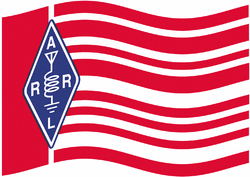 Next month, amateurs throughout the US and Canada will take part in the longest-running domestic contest, the 76th ARRL November Sweepstakes. Since 1930, this tradition in Amateur Radio has brought out all kinds of amateurs -- from seasoned contest veterans to neophytes, from long-time traffic handlers to operators new to HF. The CW running of Sweepstakes takes place next weekend, November 7-9, while the SSB weekend is November 21-23. Each event runs from 2100 UTC Saturday until 0300 UTC Monday. All entrants may operate 24 out of the 30 hours. Click
Next month, amateurs throughout the US and Canada will take part in the longest-running domestic contest, the 76th ARRL November Sweepstakes. Since 1930, this tradition in Amateur Radio has brought out all kinds of amateurs -- from seasoned contest veterans to neophytes, from long-time traffic handlers to operators new to HF. The CW running of Sweepstakes takes place next weekend, November 7-9, while the SSB weekend is November 21-23. Each event runs from 2100 UTC Saturday until 0300 UTC Monday. All entrants may operate 24 out of the 30 hours. Click 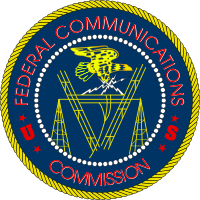 On October 27, the FCC's Wireless Telecommunications Bureau (WTB) granted the first waiver that allows amateurs who participate in a government-sponsored emergency preparedness and disaster drill to communicate on behalf of their employers during the drill. The waiver request was made on behalf of the Commonwealth of Kentucky. That state conducted a full-scale exercise on Wednesday, October 28, 2009 from 8 AM-5 PM (EDT) to test their emergency response to the possible release of chemical agents at Blue Grass Army Depot, located near Richmond, Kentucky. Click
On October 27, the FCC's Wireless Telecommunications Bureau (WTB) granted the first waiver that allows amateurs who participate in a government-sponsored emergency preparedness and disaster drill to communicate on behalf of their employers during the drill. The waiver request was made on behalf of the Commonwealth of Kentucky. That state conducted a full-scale exercise on Wednesday, October 28, 2009 from 8 AM-5 PM (EDT) to test their emergency response to the possible release of chemical agents at Blue Grass Army Depot, located near Richmond, Kentucky. Click 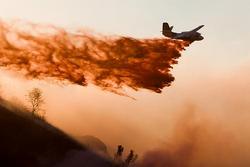
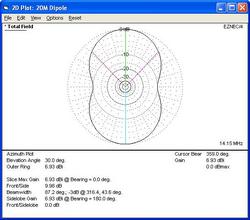
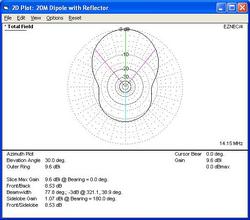
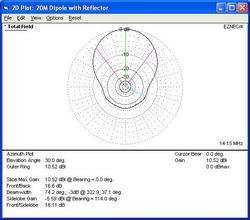
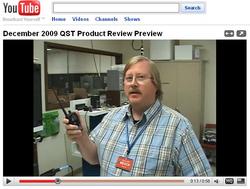
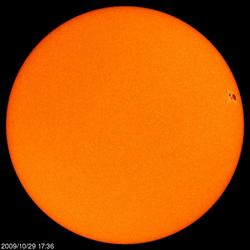 In for Tad "
In for Tad "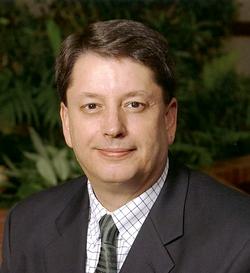

 The ARRL Sweepstakes has a long and proud history. At one point, The Philippines was a multiplier in the Sweepstakes, as was Cuba (as part of the West Indies Section). In what year did The Philippines cease to be a multiplier in Sweepstakes? When did the West Indies Section cease to be a multiplier? If you know the answer to both these questions, send one
The ARRL Sweepstakes has a long and proud history. At one point, The Philippines was a multiplier in the Sweepstakes, as was Cuba (as part of the West Indies Section). In what year did The Philippines cease to be a multiplier in Sweepstakes? When did the West Indies Section cease to be a multiplier? If you know the answer to both these questions, send one 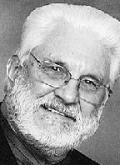
 Registration remains open through Sunday, November 22, 2009, for these online course sessions beginning on Friday, December 4, 2009: Amateur Radio Emergency Communications Level 1; Antenna Modeling; Radio Frequency Interference; Antenna Design and Construction; Ham Radio (Technician) License Course; Propagation; Analog Electronics, and Digital Electronics. To learn more, visit the
Registration remains open through Sunday, November 22, 2009, for these online course sessions beginning on Friday, December 4, 2009: Amateur Radio Emergency Communications Level 1; Antenna Modeling; Radio Frequency Interference; Antenna Design and Construction; Ham Radio (Technician) License Course; Propagation; Analog Electronics, and Digital Electronics. To learn more, visit the 







